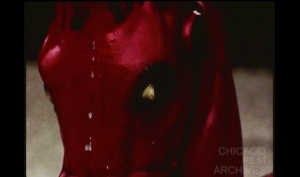
"Student film made at the School of the Art Institute of Chicago set to "Sugar Mountain," a song by Canadian folk rock singer and composer Neil Young." Chicago Film Archives
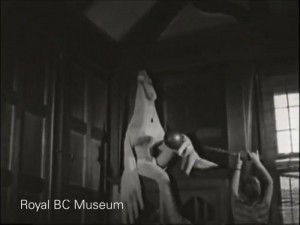
"Produced as a gift to Dorothy Burritt's husband, filmmaker Oscar Burritt (who was working in Toronto at the time), this is an offbeat study of life at their Vancouver apartment -- suite 2, 1960 Robson Street. The camera explores the apartment and the household memorabilia, and Dorothy is seen sitting for a portrait by painter Peter Bortkus. Later some friends drop by for a screening of Sacha Guitry's film Pearls of the Crown, followed by a party. Among the guests are Moira Armour, film editor Maureen Balfe, UBC student Stanley Fox, photographer Peter Varley, and an unnamed figure wearing a bird costume. Most of the people shown would have been involved with the National Film Society of Canada (Vancouver Branch). Suite Two won honourable mention (amateur category) at the first Canadian Film Awards in 1949." (BC Archives)
The film was restored in 1986 by the British Columbia Archives.
"Family scenes of playing in the garden at Westworth, Cockermouth. The children play in the garden with a trolley, an elderly couple walk in the grounds and the family pose for a group photograph." (NWFA Online Database)
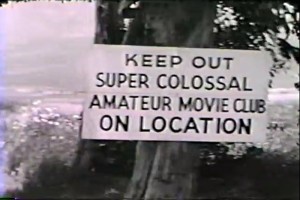
Comedic short film about an amateur movie club called Super Colossal Pictures.
"All of the players in this picture were boys in a summer camp who upon discovering that one of their members has a movie camera decide to make a motion picture. Like all youth they decide to imitate and based their story on Tarzan. The producers of this worked up a splendid bit of comedy, interjected a fine piece of melodrama with an Alger Jr. finish that rounded it out into a production that many of the judges felt would have been worthy of showing in any theatre. The acting, direction, story and handling as a whole was considered equal to many a professional comedy." American Cinematographer, Dec. 1932, 7.
"An honorable mention in the 35 millimeter division went to Thomas Fisher, of 410 Semple Street, Pittsburgh, Pa., for his grim and Barrymorish study of Poe's 'The Tell-Tale Heart.' Mr. Fisher played two parts, displayed no little skill in make-up and worked out an interesting, if gory, film." Photoplay, Jun. 1928, 137.
"These Bloomin' Plants, by Eugene L. Ritzmann, has been given Honorable Mention because of the striking technical tour de force which it represents. In it, Mr. Ritzmann has pictured, by means of a camera controlled by a mechanism of his own design and construction, the actual blossoming of some half dozen or more flowers. Through this device of time condensation, buds are seen bursting open before one's eyes, often in cascades of beauty which vividly suggest the magic of colored fireworks against a night sky. The technical management of this difficult and esoteric phase of photography was almost without flaw. In the opinion of the judges, however, Mr. Ritzmann failed to do full justice to his material, both in his editing and in his title treatment." Movie Makers, Dec. 1936, 551.
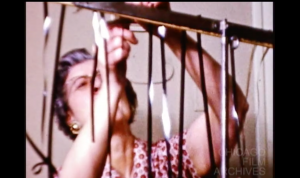
"An amateur film made by and starring the husband and wife duo, John & Evelyn Kibar. The Kibars are on a search for a hobby, and decide upon filmmaking. A domestic mishap by Mrs. Kibar results in their film being edited incorrectly. Title cards displaying dialogue are dispersed throughout the film." Chicago Film Archives
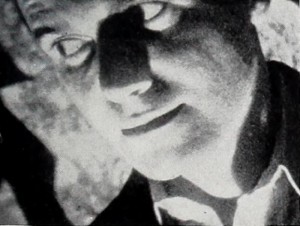
"Lon Wadman has done in This'll Kill You! what few movie makers who have tried it have achieved. He has filmed a farce that does not wander into other interpretive channels. His mockery of detective stories is accomplished with real humor, and the acting of the players is in like vein. The lighting is in proper melodramatic mood, but it leans toward underexposure. The film is presented with two phonograph records which were aptly chosen to supplement the theme. Mr. Wadman has kept his film brief, which is as it should be with this type of story." Movie Makers, Dec. 1945, 496-497.
"Interior footage of a woman playing the piano. A few shots also feature a young child sat on her knee whilst she plays. Includes close up shots of the woman's arms and hands, as she presses the piano keys" (NWFA Online Database).
Total Pages: 15